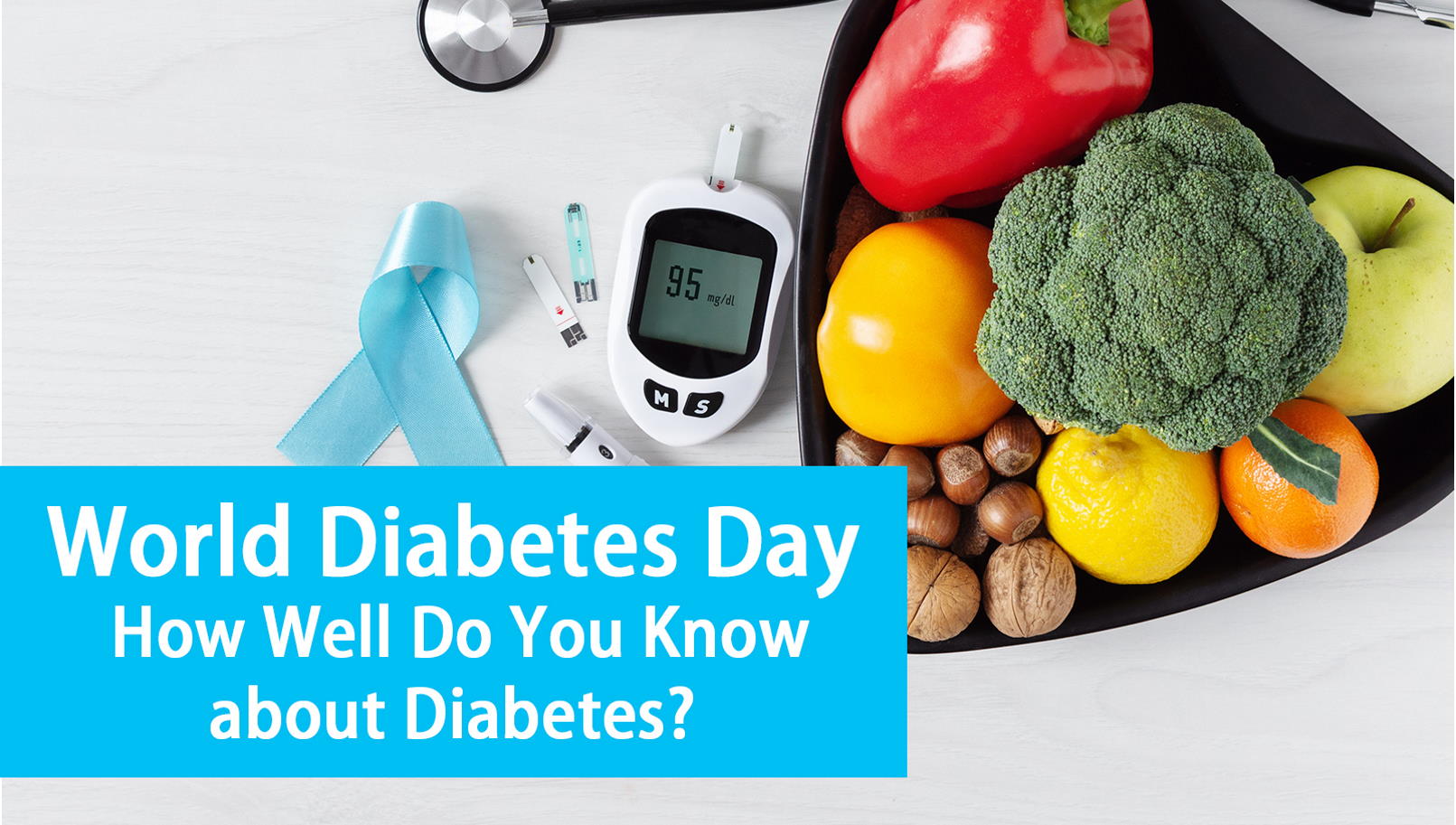23 November 2022
Every 14 November is World Diabetes Day. According to the National Health and Morbidity Survey (NHMS) in 2019, one out of every five adults above 18 years old might be suffering from diabetes, which constitutes 20% of the population (approximately 3.9 million people). The data shows precisely how common diabetes has become among us.

Reasons of diabetes
Diabetes can be categorized into three types, specifically type 1, type 2, and gestational diabetes (diabetes while pregnant).
Type 1 Diabetes: Pancreas could not produce insulin, patients can only regulate their blood sugar through insulin injection.
Type 2 Diabetes: Insufficient insulin production or impedance occurred. The blood sugar can only be regulated with medication and insulin injection.
Gestational Diabetes: The first occurring diabetes condition during pregnancy which will be recovered after pregnancy. However, if the blood sugar is not controlled, it might affect the baby or even lead to Type 2 Diabetes after the mother has given birth.

Criterion for blood glucose test (according to MIMS official website)
The diabetes diagnosis needs to be done through venous blood samples instead of finger prick.
Fasting blood glucose test: fast for 8 hours and above before taking the test. Your blood sugar level is higher than 7 mmol/L.
Oral glucose tolerance test: Drink 75 g of glucose solution two hours before the test. The blood sugar level is higher than 11.0 mmol/L.
The hemoglobin A1c (HbA1c) test: HbA1c would show the average blood sugar level from the past three months, which would be more than 6.5 %.

Common symptoms
Symptoms that often accompany diabetes would include increased appetite and thirstiness, as well as frequent urination. Other symptoms may also include: slow healing wounds, blurred visions and weight loss.
Complications
Diabetes is not only about high blood sugar levels but also could lead to diabetic retinopathy, kidney diseases, cardiovascular diseases, neuropathy, skin diseases in feet and other health problems.

Lifestyle and eating habits
Be careful with the amount of food taken, especially carbohydrates. Other than rice and noodles, starchy vegetables such as potatoes, sweet potatoes, yam and burdock contain huge amounts of starch.
Eat three meals regularly.
Cut down intake of processed food.
Practice a balanced diet - less oil, less salt and less sugar, as well as reduce alcohol consumption.
Maintain normal weight, avoiding overweight and underweight.
Exercise three times a week, 30 minutes per time.
Pay attention to the duration of exercise to prevent low blood sugar occurrences.
Take fasting blood glucose tests regularly as well as medication or insulin injection.

A healthy eating habit could help us control our health conditions, at the same time reduce the possibility of disease occurrences. We can make some positive changes in our diets, for example sugar substitutes to enhance the sweetness in foods and beverages. Stevia leaves have been used in many PHHP products as sweeteners.
And finally, PhytoFairy wants to remind everyone that even though it is scary to be diagnosed with diabetes, the most threatening thing is the complications caused by neglect and insufficient care of the diabetes symptoms. Therefore, regular body checkup is a must for everyone to ensure our body is in good condition!






